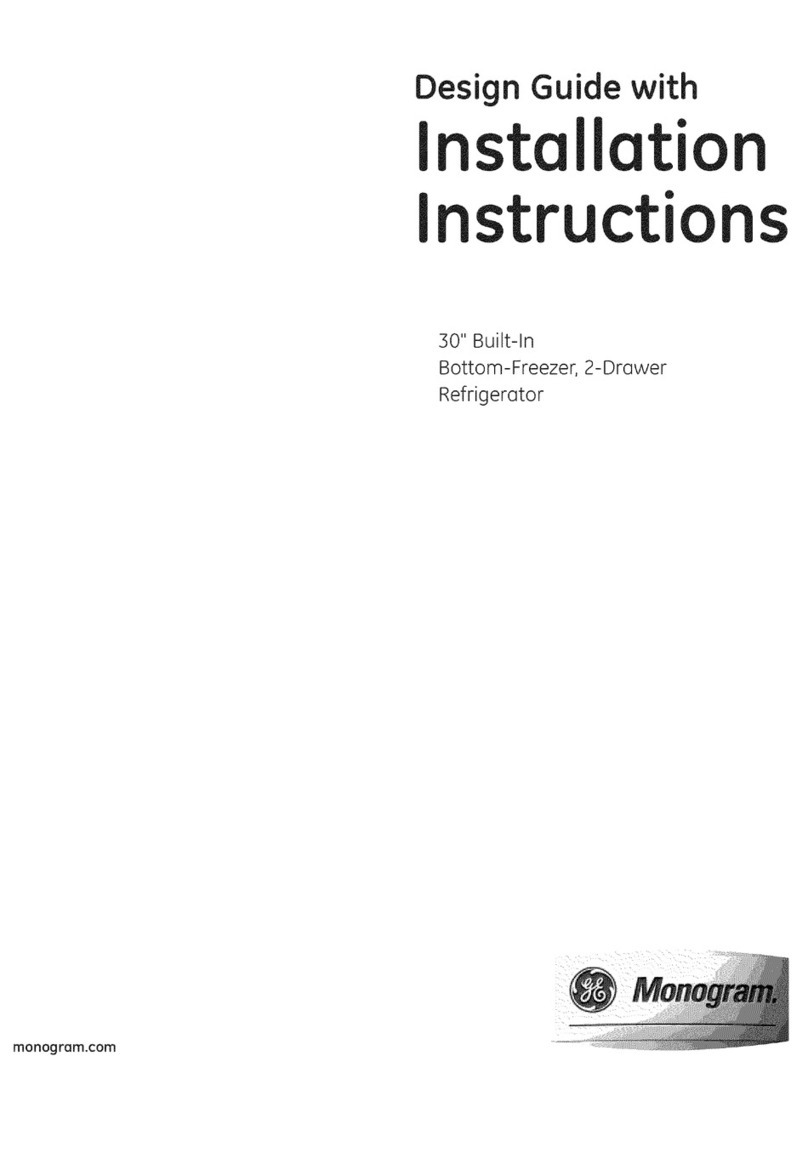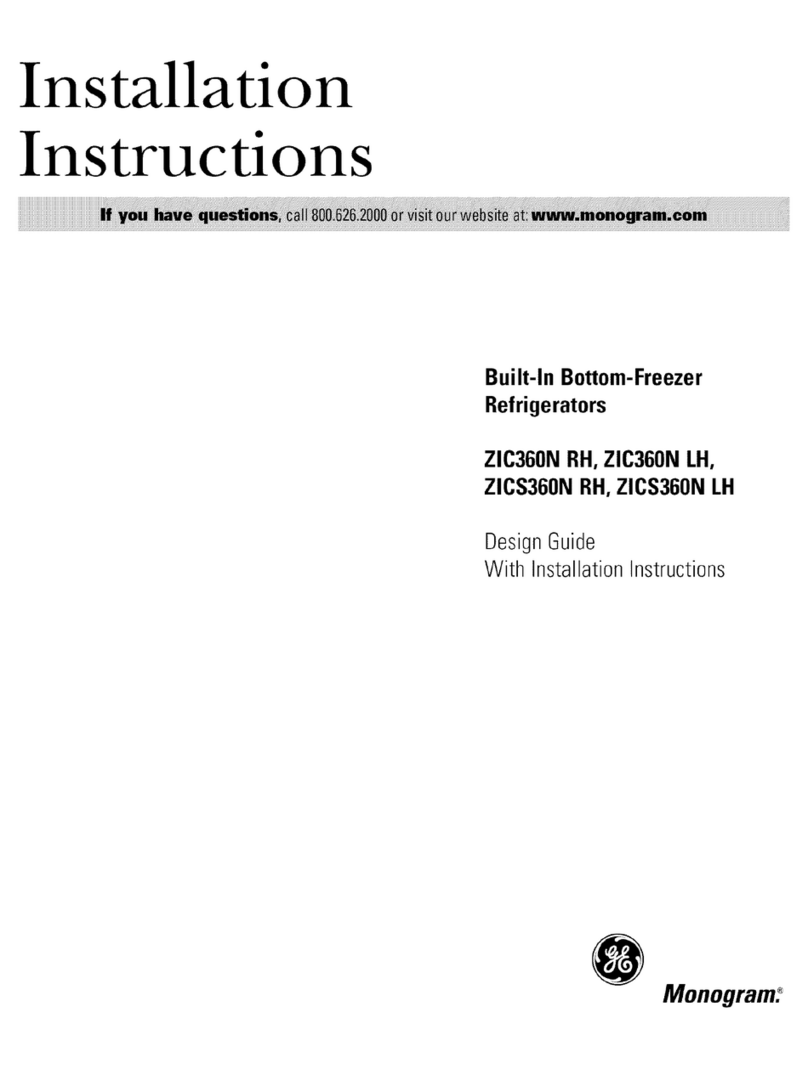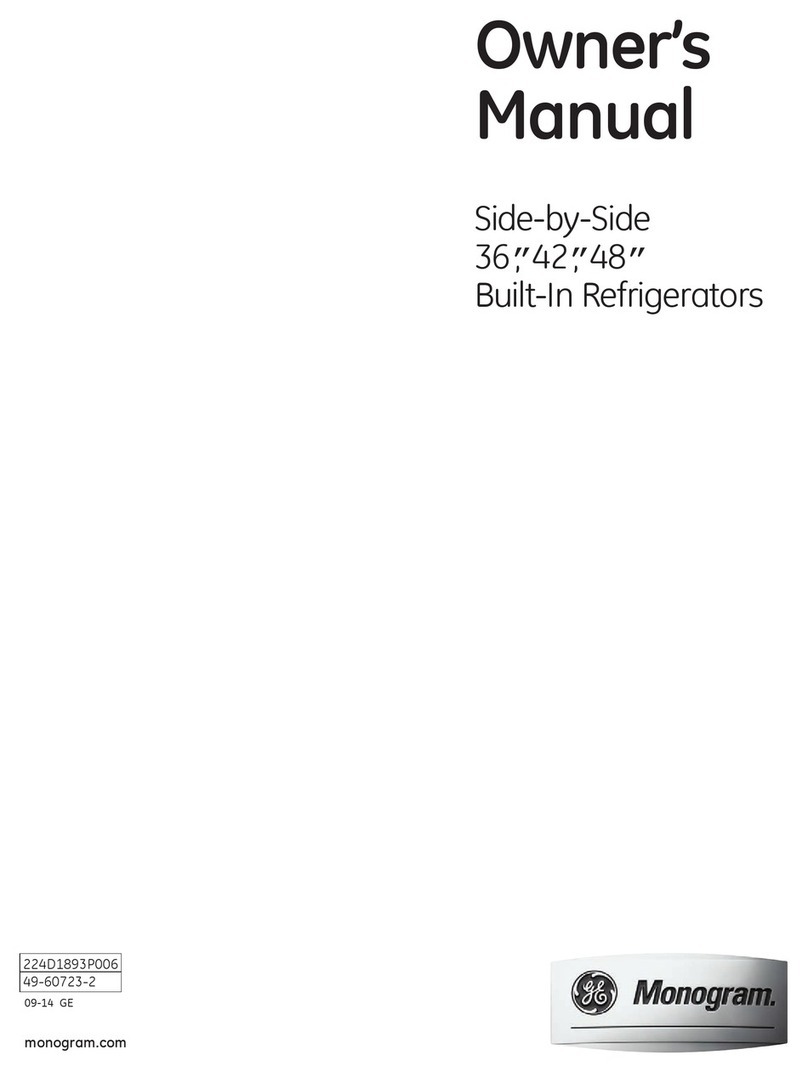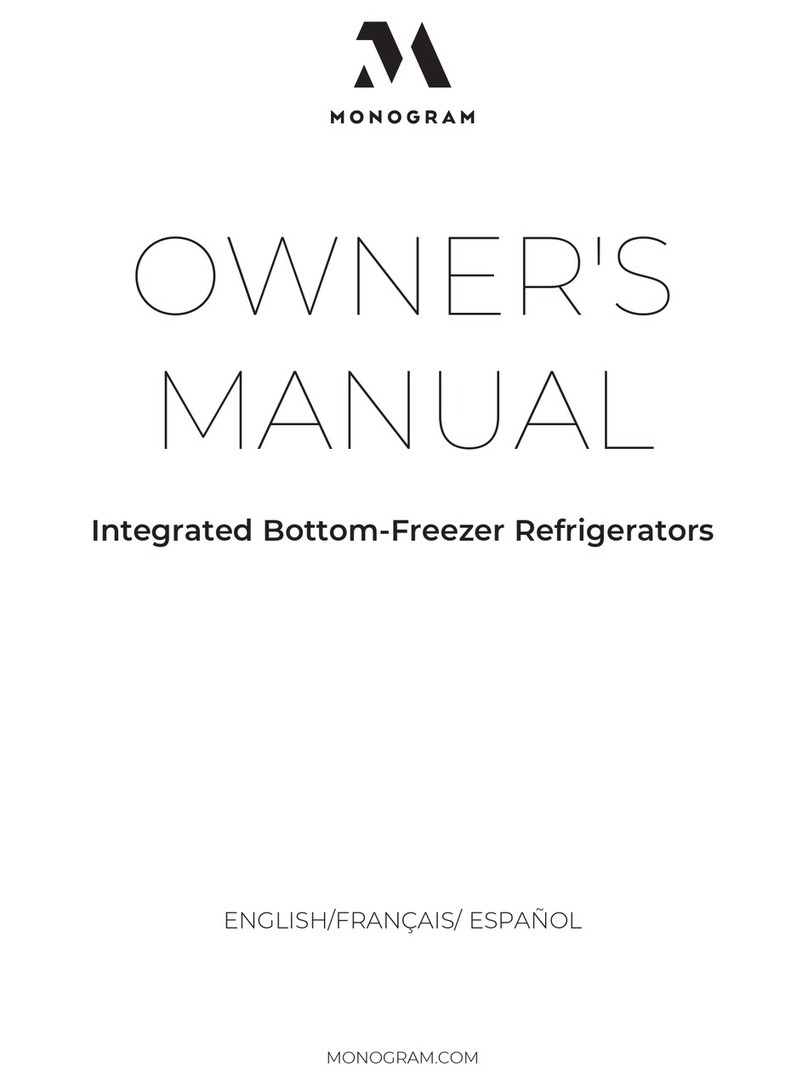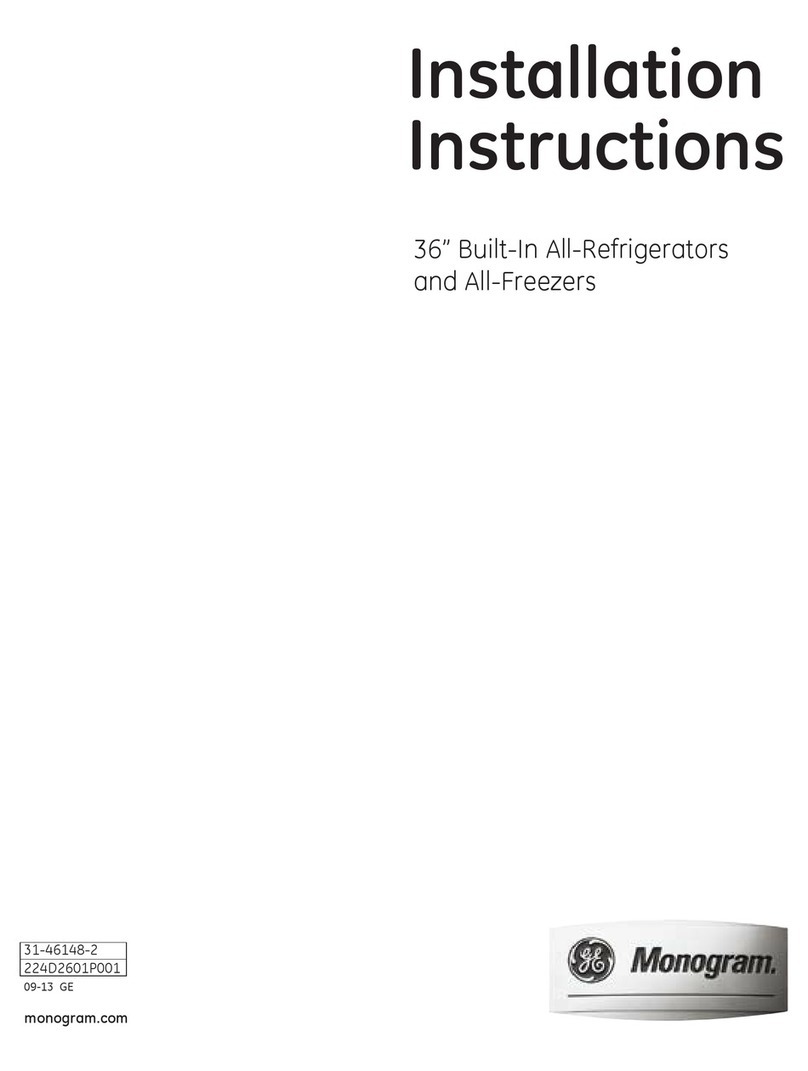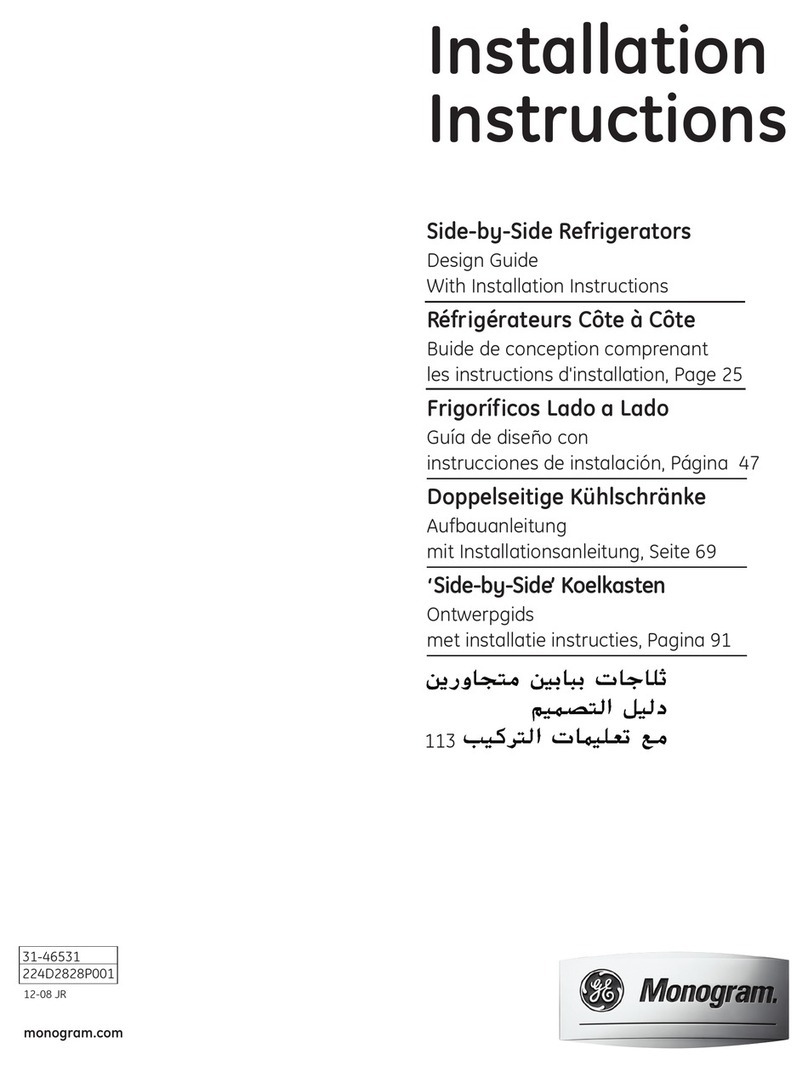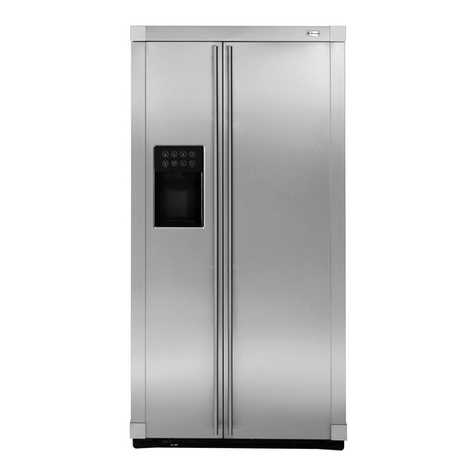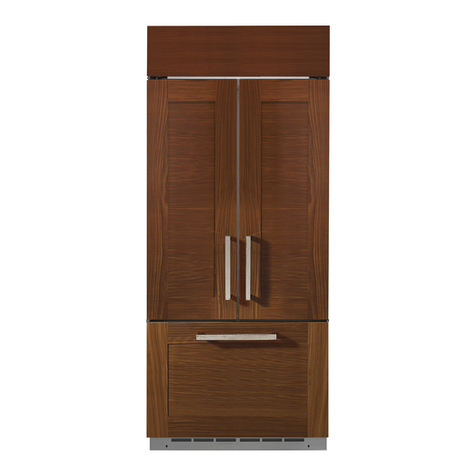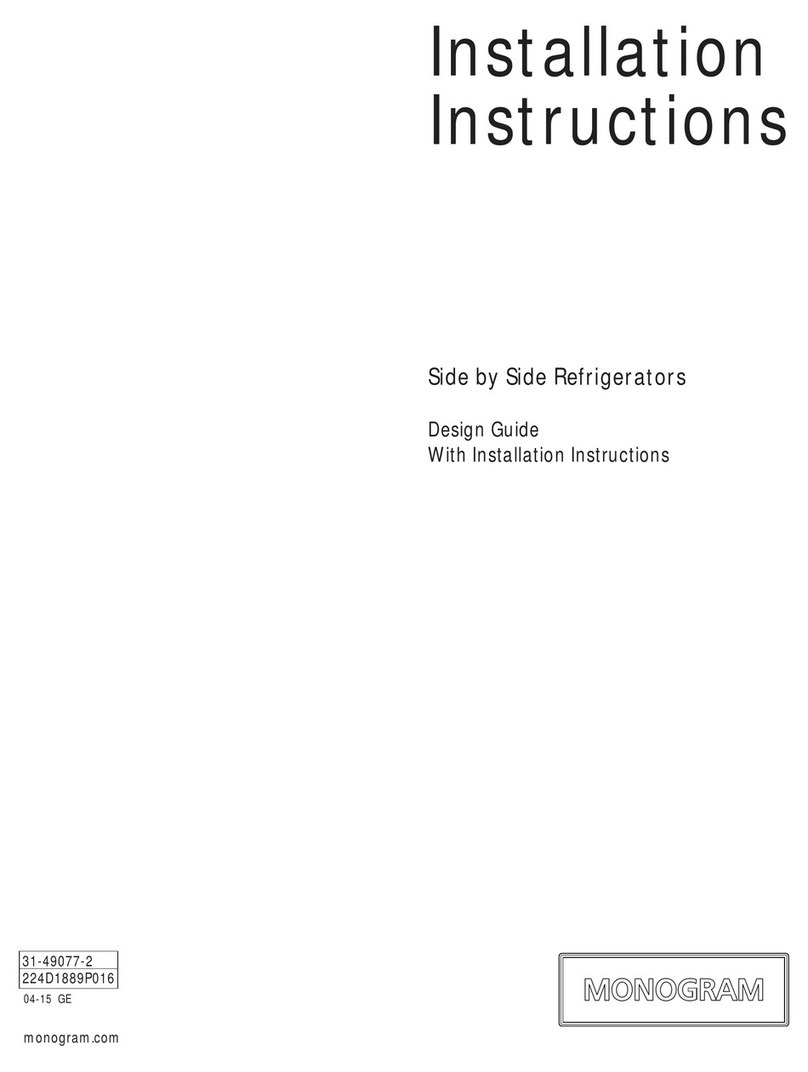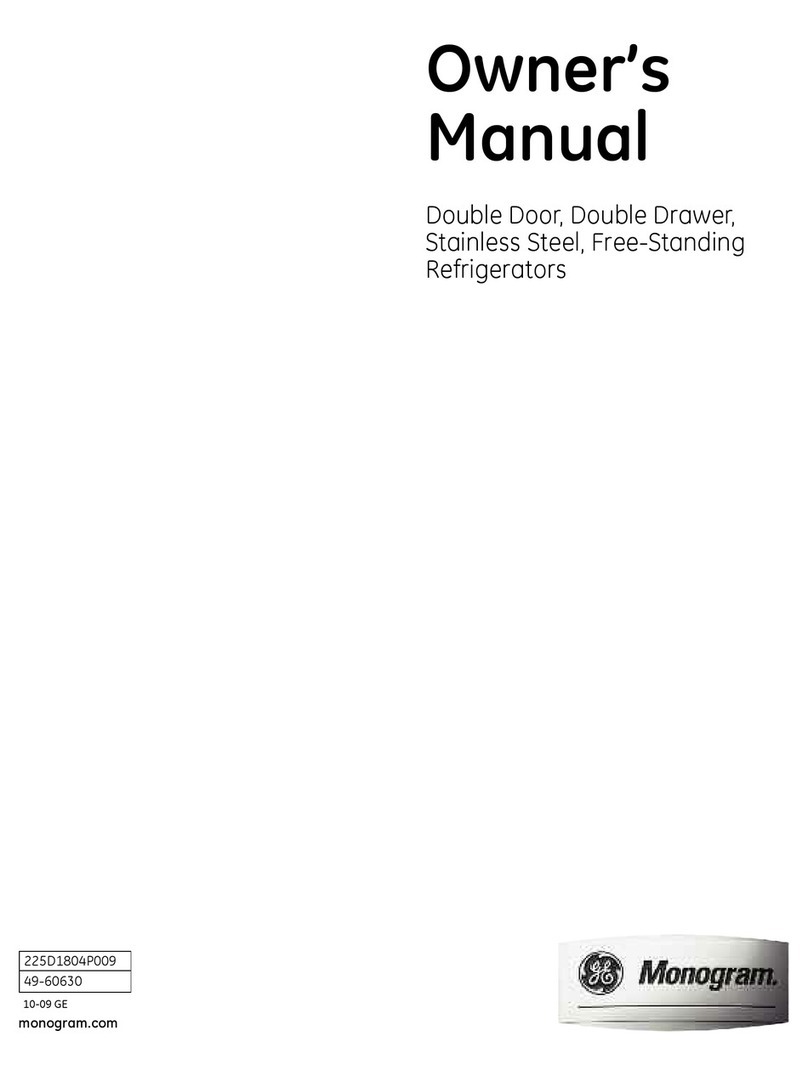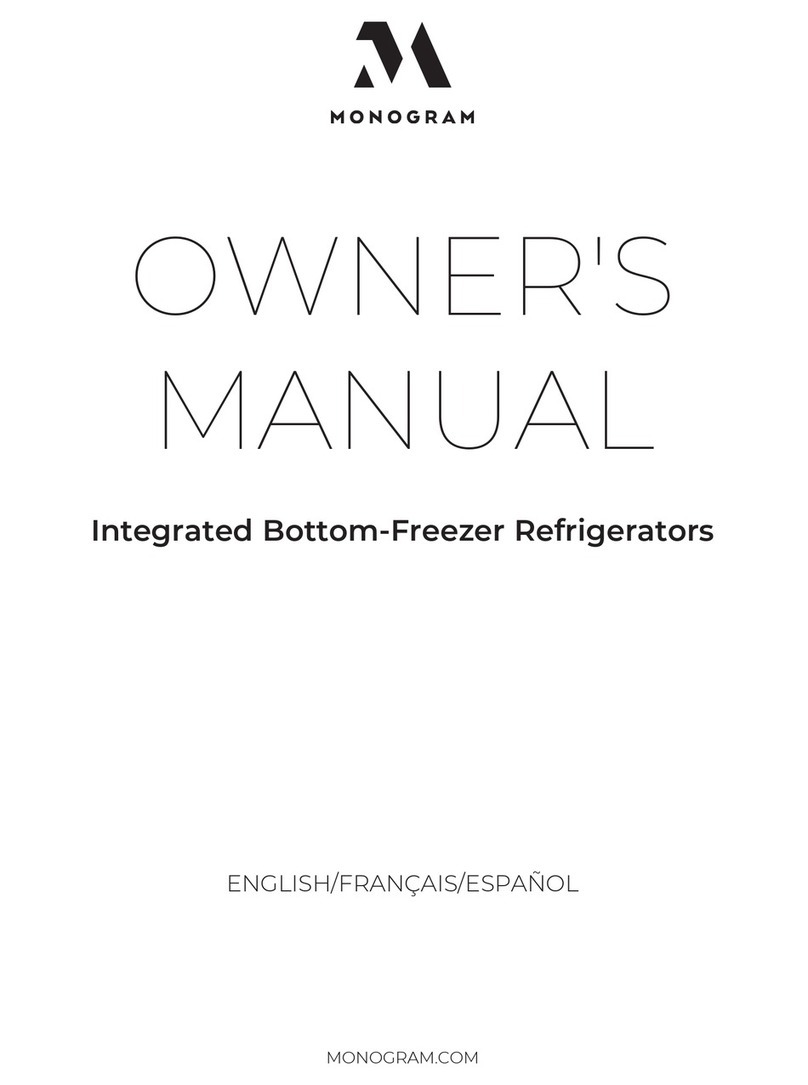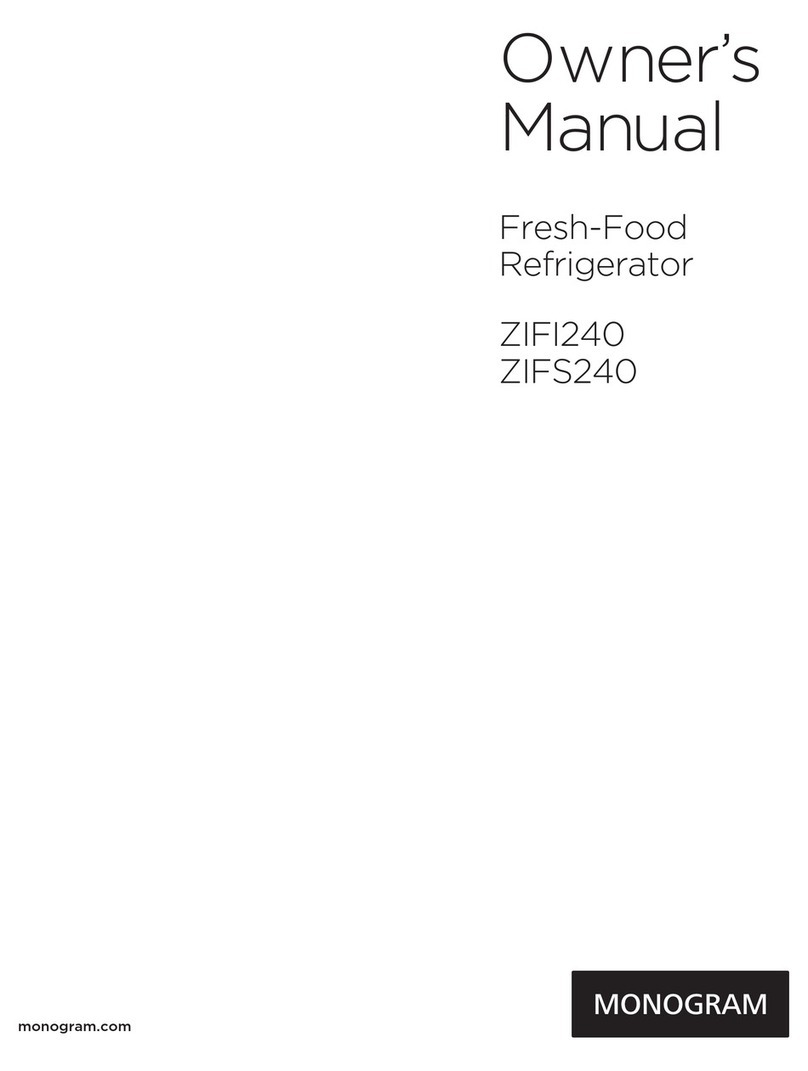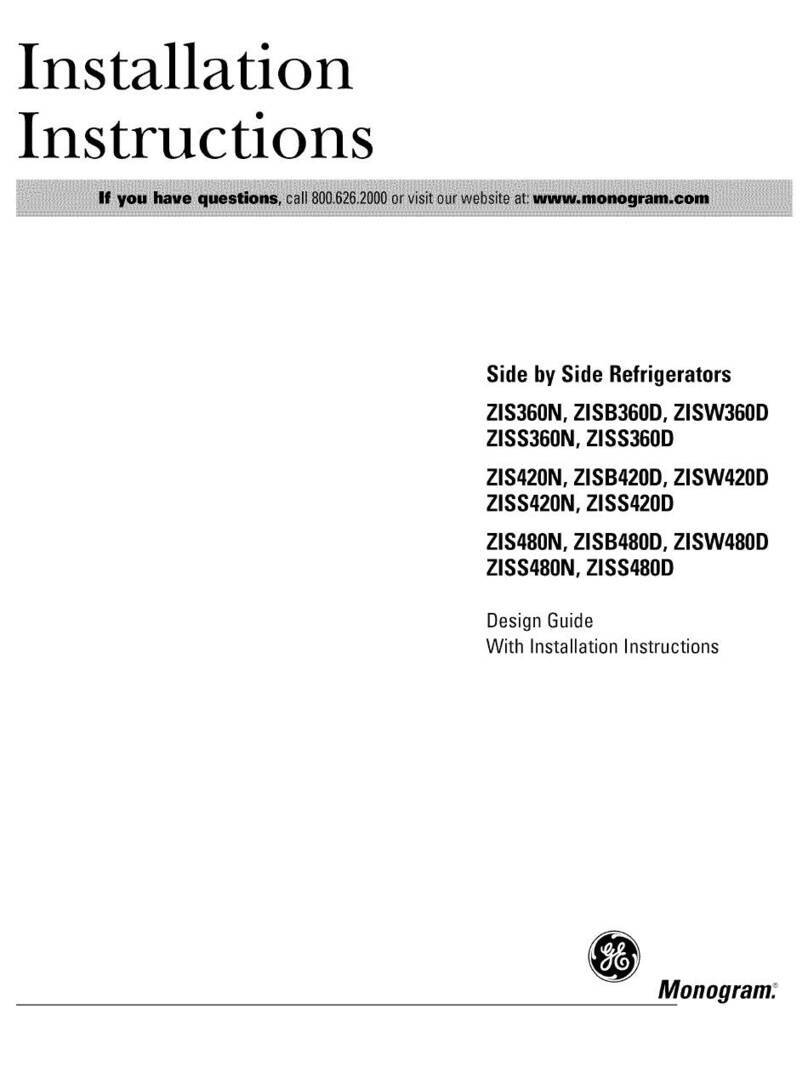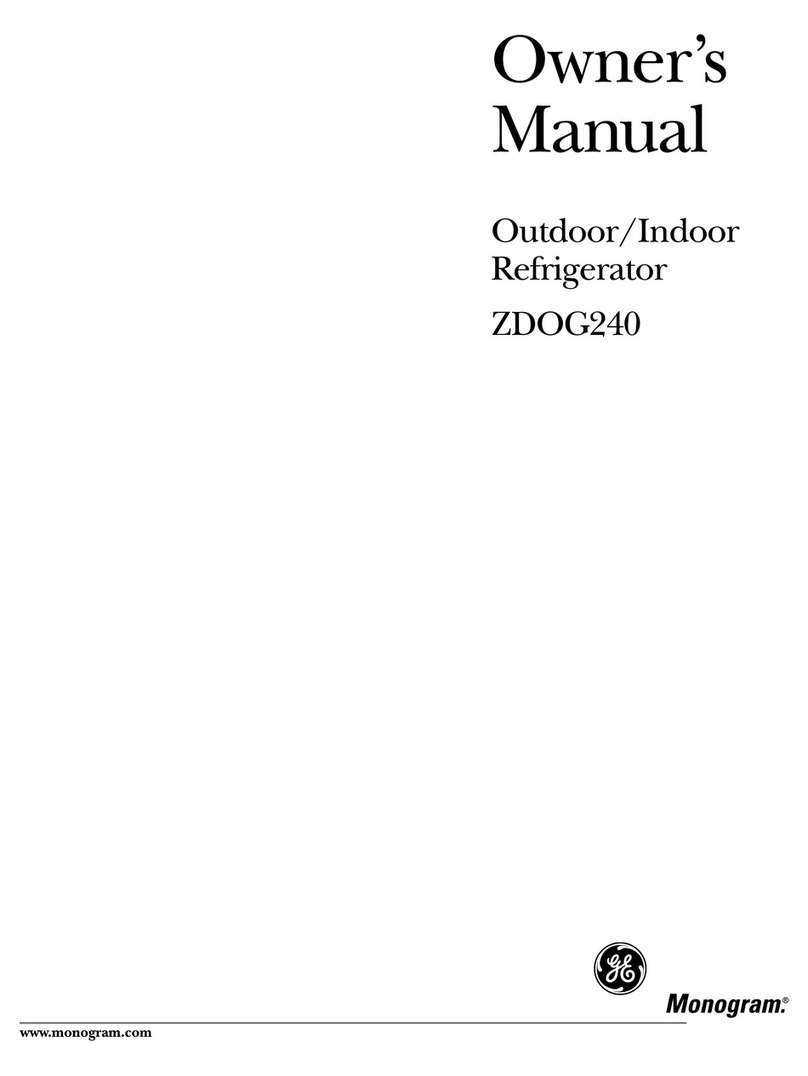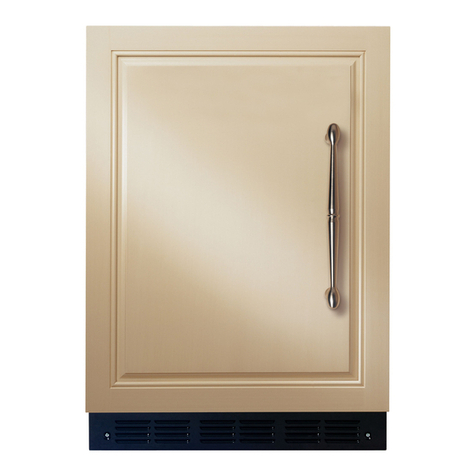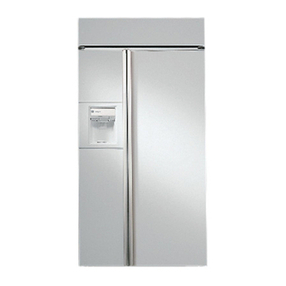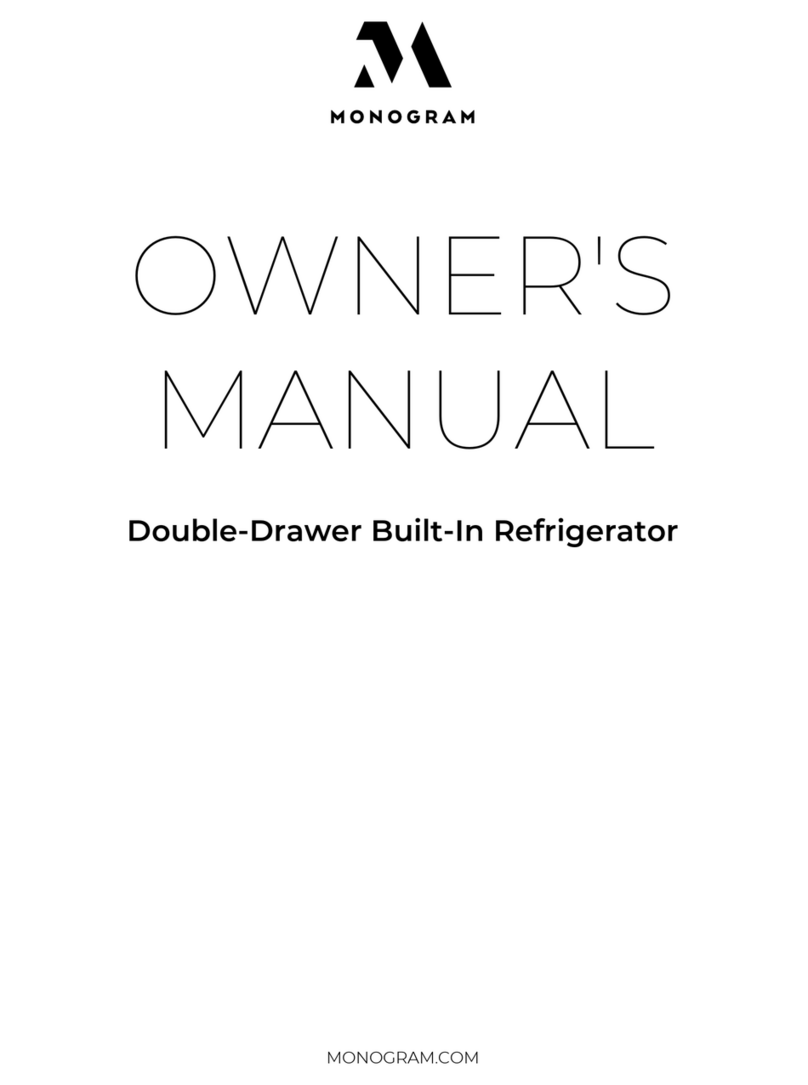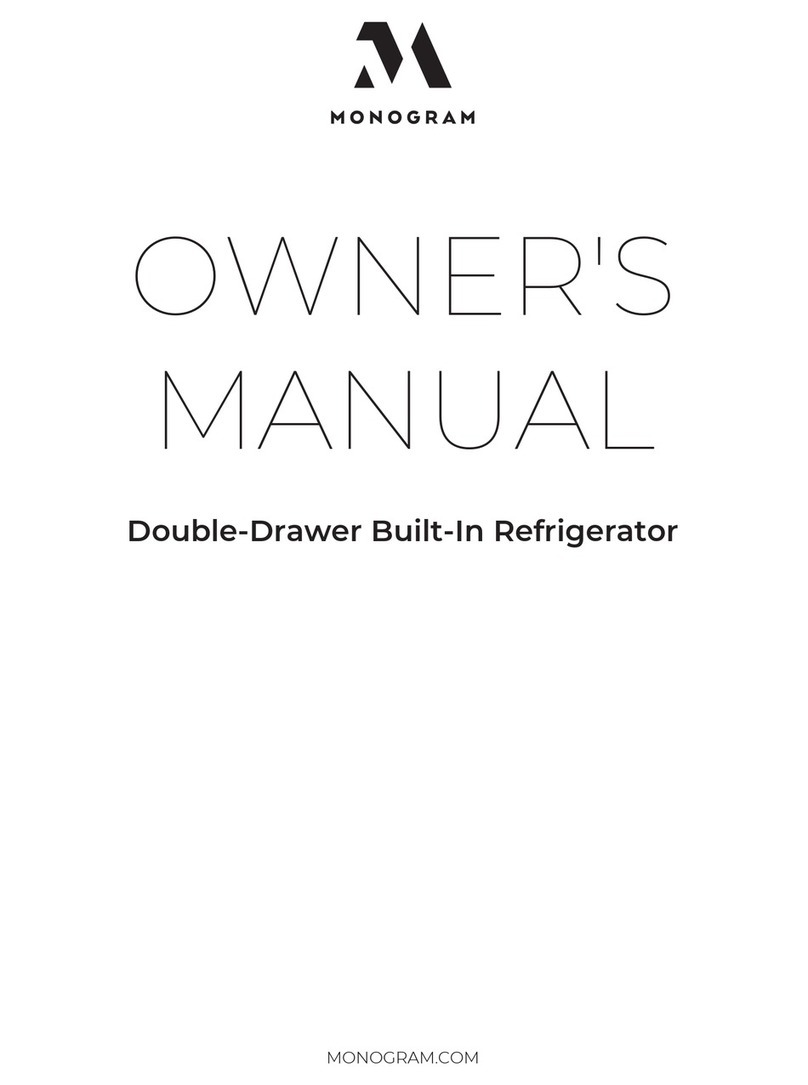
.
Food Storage Suggestions
.
~uggested storage times
for meat and poultry*
REFRlf!!RATOR
Eating quality drops
after time shown 35o #400F.
OAYS
Fresh Meats
Roasts(Beef&Lamb) . . 3to 5
Roasts(Pork&Veal) ....... 3to 5
Steaks(Beef).. ........... 3t05 ,,
Chops(Lamb) .. ....... 3t05
Chops(Pork) ........... 3t05
Ground&Stew Meats .1to 2
VarietyMeats .. ........ lto2
Sausage(Pork) . . . . . . . . . . . . lto2
Processed Meats
Bacon . . ...,...., 7
Frankfurters . . . . . . . . . 7
Ham(Whole), ............ 7
Ham(Half).. ., ......... 3t05
Ham(Slices), . . . . . . . . 3
LuncheonMeats ........ 3t05
Sausage(Smoked) ....... 7
Sausage(Dry&Semi-Dry),... 14to 21
Cooked Meats
CookedMeatsand
MeatDishes .,
Gravy&MeatBroth .
Fresh Poultry
:ken &Turkey(Whole)
-,llcken (Pieces) .,
Turkey(Pieces)
Duck &Goose (Whole).
Giblets
Cooked Poultry
.,. 3t04
.lto2
.:: lto2
lto2
lto2
lto2
lto2
Pieces(Coveredwith Broth).. 1to 2
Pieces(Not Covered). . ... . . . 3to 4
CookedPoultry Dishes. . . . . 3to 4
FriedChicken . . . . . . . 3t04
FRE’:ZER
(!;.
MONTHS
6to 12
4t08
6to 12
6t09
3t04
3t04
3t04
lto2
1
l/~
ltc2
lto2
lto2
Freezing
notrecom-
mended.
2t03
2t03
12
9
6
!
6
1
4t06
4
(Otherthanformeats &poultry) FREEZER
Most fruits and vegetables ........ ..8-V months
Lean fish.... ............. .... .o-8months
Fattyfish. rolls and breads,
soups,stew,casseroles . . . . . . ...2-3 months
Cakes,pies,sandwiches,
leftovers(cooked),
icecream (original carton) . . . .,, . ...1 monthmax.
New techniques are constantly being developed.
Consult the College or County Extension Service
or your local Utility Company for the latest
information on freezing and storing foods.
●U.S.Depaflment of Agriculture
Meats, fish and poultry purchased
from the store vary in quality and
age; consequently, safe storage
time in your refrigerator will vary.
To store unfrozen meats, fish and
wultry:
Always remove store wrappings.
●Rewrap in foil, film or wax paper
and refrigerate immediately.
To store cheese, wrap well with
wax paper or aluminum foil, or put
in aplastic bag.
●Carefully wrap to expel air and
help prevent mold.
●Store pre-packaged cheese in its
own wrapping if you wish.
To store vegetables, use the
vegetable drawers—they’ve been
designed to preserve the natural
moisture and freshness of produce.
●Covering vegetables with amoist
towel helps maintain crispness.
●As afurther aid to freshness,
pre-packaged vegetables can be
stored in their original wrapping.
Note: Specialji-esh food compartment
drawers make it unnecessary to wrap
certain foods which they ‘w?been
designed to preserve. These drawers
are described on pages 6 and ~.
To store ice cream–Fine-quality
ice cream, with high cream
content, will normally require
slightly lower temperatures than
more “airy” already-packaged
brands with low cream content.
●Itwill be necessarytoexperiment to
determine the freezer compartment
location and temperature control
setting to keep your ice cream at
the right serving temperature.
●The rearofthe freezercompartment
is slightly colder than the front.
Tips on freezing foods
There arethreeessential~quimments
for efficient home freezing.
1. Initial quality. Freeze only top-
quality ftis. Freezingretainsquality
and flavor; it cannot improvequality.
2. Speed. The quicker fruits and
vegetables are frozen after picking,
the better the frozen product will
be. You’llsave time, too, with less
culling and sorting to do.
3. Proper packaging. Use food
wraps designed especially for
freezing; they’re readily available
at most food stores.
Tofreeze meat, fish and poultry,
wrap well in freezer-weight foil (or
other heavy-duty wrapping material)
forming it carefully to the shape of
the contents. This expels air. Fold
and crimp ends of the package to
provide agood, lasting seal.
Don’t refreeze meat that has
complete]ythawed; meat, whether
raw or cooked, can be frozen
successfully only once.
Limit freezing of fresh (unfrozen)
meats or seafoods to 30 pounds at
atime.
Forconwniience...
●Store like things together. This
saves both time and electricity
because you can find foods faster.
●Place the oldest items up front so
they can be used up promptly.
QUse shelves on the door for most
often used sauces and condiments.
Tosave money in energy
and food costs
●Place most perishable items. such
as milk, cream or cottage cheese,
toward the rear of the top shelf, as
they will stay coldest in this part
of the fresh food compartment.
●Cover moist foods with tight lid%
plastic film or foil.
●Leaf vegetablesand fruits placed in
drawerswill last longer when stored
in closed plastic containers or
wrapped in plastic film.
.Do not overload your fresh food
or freezer compartment with alot
of warm food at once.
●Open the door the fewest times
possible to save electrical energy.
cWhen going out of town for
severaldays, leaveas fewperishables
as possible in the refrigerator. Move
the icemaker feeler arm to the OFF
(up) position and shut off water to
the refrigerator.
5Part No. 162D1525PO01
